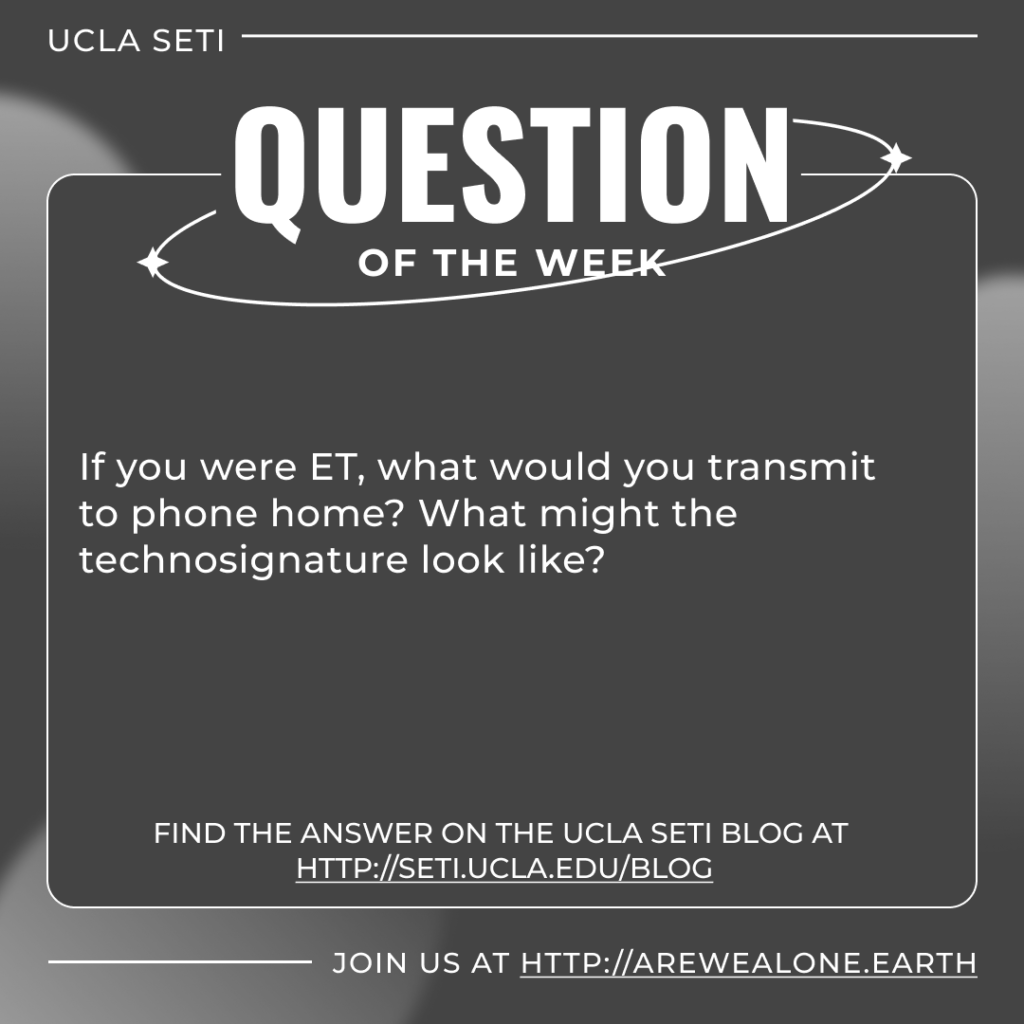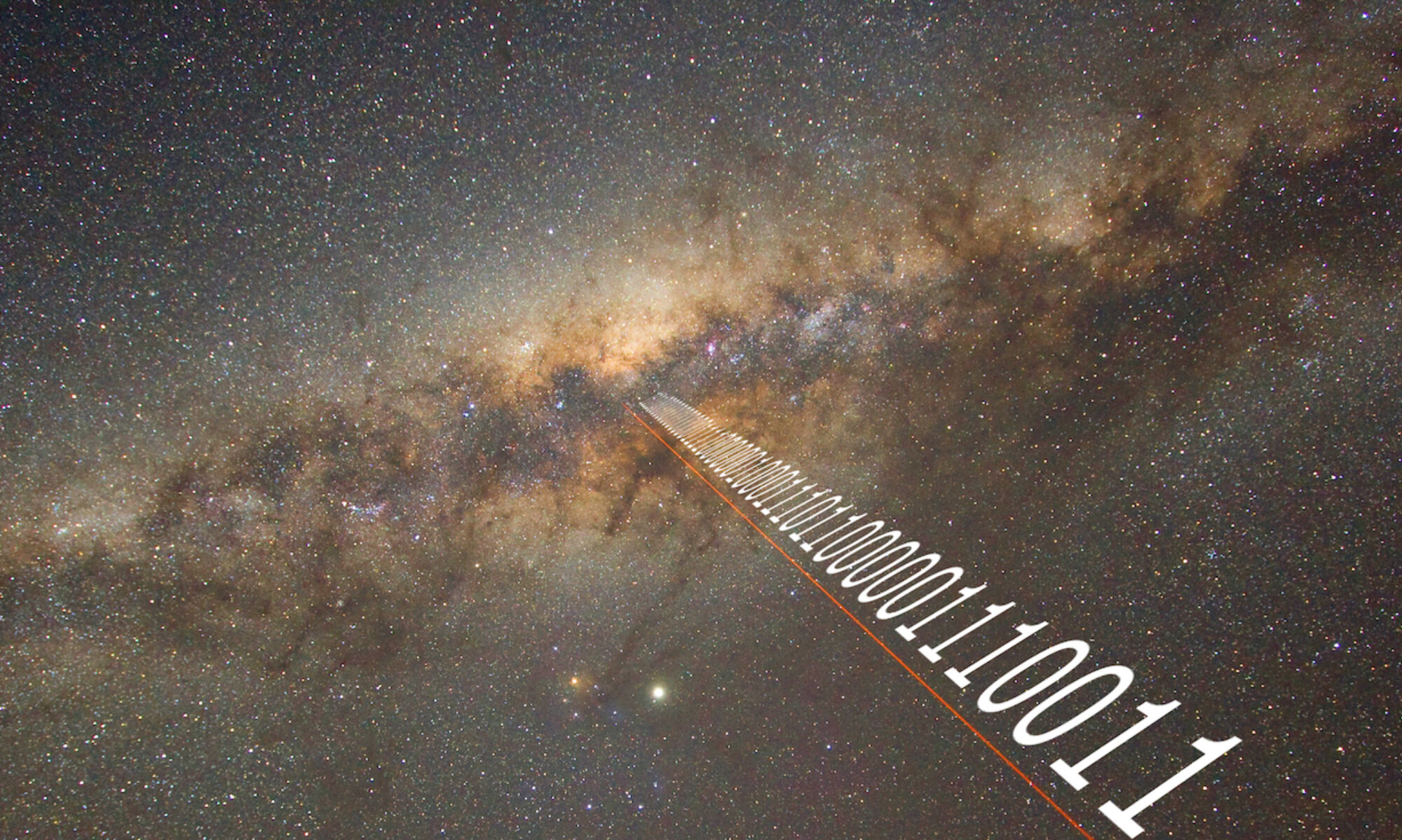
Every week, we answer a question from our February 16, 2023 launch event Q&A session or from a Zooniverse participant. This week’s questions come from David Michels: If you were ET, what would you transmit to phone home? What might the technosignature look like?
It is fun to speculate about how a technosignature might look. Our answer will focus on radio technosignatures. Although we could in principle detect radio signals that were not intended for detection by humanity, such as those produced by the radar or interstellar communication systems of other civilizations, SETI is far more likely to succeed if a civilization advertises its presence with radio beacons. We do not know if advanced civilizations operate radio beacons, but it is a reasonable hypothesis that can be tested with instruments such as the Green Bank Telescope. How would a civilization go about signaling its presence to an unknown civilization at another stage of development? It would seem sensible to broadcast a signal that is both likely to be detected and easily distinguishable from natural signals.
The first desirable trait – detectability – led Cocconi and Morrison (1959) to suggest searching near the 1420 MHz hydrogen emission line (see our previous post), on the assumption that all civilizations exhibit curiosity and know about the special role of hydrogen in our universe. This part of the electromagnetic spectrum may resemble meeting point areas at commercial hubs where you might go to find family and friends.
The second desirable trait – distinctiveness – has led to many ideas about characteristics that would rule out a natural origin for radio signals, such as unusual sequences of pulses or unusual spacings in the frequency domain, perhaps organized around prime numbers or other noteworthy mathematical constants. Perhaps the simplest way to transmit an unmistakably artificial signal is to concentrate a signals’s energy in a narrow range of frequencies, because natural systems are unable to do that. This consideration is driving the search for narrowband signals at UCLA SETI.
This week, our collaborators got us excited by noticing a signal that is clearly artificial and designed to grab someone’s attention. Regrettably, our verification process indicated that the signal is the product of human technology. The search continues!

Electromagnetically yours,
UCLA SETI
